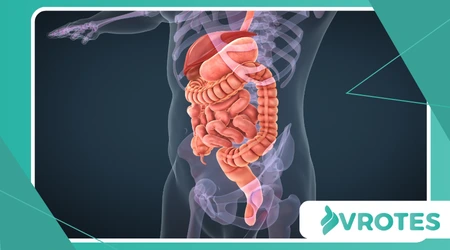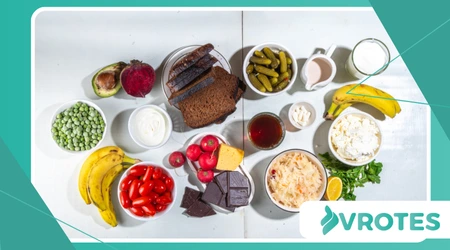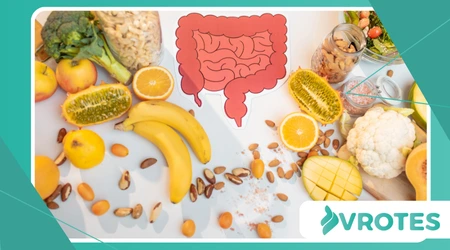The Science of “Food Combining” and Digestive Efficiency

The concept of Science of “Food Combining” and Digestive Efficiency has intrigued health enthusiasts for years.
Anúncios
Proponents suggest that certain food combinations, like fruits and proteins, can hinder digestion.
But is there solid scientific evidence to support this claim? Let’s dive into the fascinating world of our digestive system.
What Is Food Combining and Where Did It Come From?
Food combining is a dietary approach rooted in the belief that different foods require different digestive enzymes.
For instance, some theories propose that acidic fruits should not be eaten with starches.
Anúncios
This idea gained traction in the early 20th century. Dr. Herbert Shelton’s “food combining” principles were particularly influential.
He theorized that consuming a protein and a starch at the same time would neutralize the stomach’s pH. However, this simplification overlooks the incredible complexity of the human body.
The reality is our digestive system is a remarkably efficient machine. It’s not a simple one-way street.
The stomach, for example, secretes hydrochloric acid, which creates a highly acidic environment.
This acidity is essential for breaking down proteins. Simultaneously, the pancreas releases a range of enzymes.
These include amylase for carbohydrates, lipase for fats, and proteases for proteins. Our body is naturally equipped to handle multiple food types at once.
The Stomach: A Multi-Tasking Marvel
Think of your stomach not as a single-use tool but as a sophisticated multi-tasker. It’s like a high-end kitchen with specialized chefs all working simultaneously.
One chef handles the proteins, another the fats, and a third the carbohydrates. They don’t wait for each other to finish.
Instead, they work in harmony to break down all the ingredients you’ve provided.
The idea that a protein would somehow “cancel out” a starch is a misunderstanding of this beautiful, coordinated process.
Read more: Balancing Omega-6 and Omega-3: Why It Matters in Menopaus
The stomach simply adjusts its output of enzymes and acids based on what’s present.
Consider a classic meal like steak and potatoes. The stomach releases pepsin, a protease, and also prepares for carbohydrate digestion.
This is a normal, not a “conflicting,” process. Your body doesn’t get confused. It adapts. The stomach’s pH is primarily regulated by the body’s own mechanisms.
It remains highly acidic to kill bacteria and prepare proteins. The presence of carbohydrates doesn’t alter this fundamental function.

Debunking the Myths: Are Fruits Really So Different?
One of the core tenets of food combining is that fruits should be eaten alone. The argument is that they are digested so quickly.
When eaten with other foods, they supposedly ferment in the gut. While it is true that fruits digest relatively quickly, this fermentation idea is largely unfounded.
Your digestive system is a continuous tube. The stomach empties its contents into the small intestine at a steady, controlled rate.
This ensures that all nutrients are absorbed efficiently. The stomach’s role is to churn and mix. It doesn’t hold food hostage until fermentation can occur.
See how interesting: How Sound Frequencies Influence Mood and Cognition
For example, a study by the National Institutes of Health (NIH) found that the body’s digestive processes are not as easily disrupted as food combining theories suggest.
The digestive system is a robust and flexible system. It handles complex combinations of nutrients daily. The small intestine is where most nutrient absorption occurs.
Here, digestive enzymes from the pancreas and bile from the liver break down everything.
The Real Science of “Food Combining” and Digestive Efficiency
The true Science of “Food Combining” and Digestive Efficiency is about nutrient synergy. Some food pairings actually enhance nutrient absorption.
A great example is iron and vitamin C. Eating iron-rich foods, like spinach, with a source of vitamin C, like bell peppers, can significantly increase the iron absorbed by your body.
Another example is the combination of fat and fat-soluble vitamins. The presence of healthy fats helps your body absorb vitamins A, D, E, and K.
The focus should be on creating balanced meals, not on restrictive rules. For most people, the stomach is perfectly capable of managing a mixed diet.
++ Cross-Cultural Healing Rituals and Their Psychological Impact
The real issue is often about the quality of the food, not the combination.
Whole, unprocessed foods are easier for your body to manage. Excessive intake of highly processed foods can strain the digestive system.
Food Combining and You: The Psychological Component
The psychological impact of following a strict diet can be significant. Focusing too much on perfect combinations can lead to anxiety.
This stress can itself negatively impact digestion. The gut-brain axis is a well-documented phenomenon. Stress and anxiety can cause digestive discomfort and issues.
So, obsessing over the Science of “Food Combining” and Digestive Efficiency might be counterproductive.
Instead of worrying about specific pairings, focus on mindfulness. Chew your food thoroughly. Eat slowly.
These simple habits have a far more significant impact on digestion. They allow your body to prepare for the process.

When Does “Combining” Matter? Science of “Food Combining” and Digestive Efficiency
There are some instances where food interactions are relevant. For example, individuals with specific health conditions may need to be careful.
People with irritable bowel syndrome (IBS) often find that certain high-FODMAP combinations worsen their symptoms. This isn’t about protein and carbohydrates.
It’s about specific sugar types that can ferment. But this is a specific medical condition. For the general population, the body is highly adaptable.
| Food Pairings That Can Enhance Nutrient Absorption | Why It Works |
| Spinach and Lemon Juice (Iron and Vitamin C) | Vitamin C enhances the absorption of non-heme iron. |
| Turmeric and Black Pepper (Curcumin and Piperine) | Piperine in black pepper significantly increases the bioavailability of curcumin. |
| Avocados and Carrots (Healthy Fats and Beta-Carotene) | Healthy fats from avocado help the body absorb the fat-soluble beta-carotene. |
Conclusion: A Balanced Perspective on the Science of “Food Combining” and Digestive Efficiency
The human digestive system is a masterpiece of biological engineering. It’s designed to process a wide variety of foods at once.
The idea that certain combinations are harmful is largely a myth. While these theories may seem logical, they don’t align with how our bodies actually work.
Instead of fixating on restrictive rules, embrace a balanced, diverse diet.
The true keys to digestive health are fiber, hydration, and mindful eating. After all, isn’t it more liberating to trust your body’s incredible capabilities?
Frequently Asked Questions Science of “Food Combining” and Digestive Efficiency
Is it true that fruit ferments in your stomach if you eat it with other foods?
This is a common myth. Your stomach is constantly churning its contents. It then empties into the small intestine.
This process prevents fermentation. The stomach’s acidic environment also prevents most fermentation.
Can food combining help with weight loss?
Any weight loss associated with food combining is likely due to an overall reduction in calories.
These diets often eliminate processed foods and focus on whole foods. It is not due to any specific “magic” of combining.
What are the best foods for improving digestion?
High-fiber foods like vegetables, fruits, and whole grains are excellent for digestion.
Probiotic-rich foods like yogurt and kefir also support gut health. Hydration is key, so remember to drink plenty of water.
++ Food Combining Rules, Benefits & How to Follow This Ancient Approach to Eating
